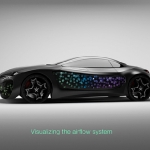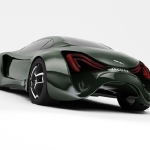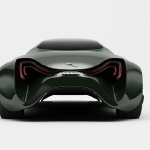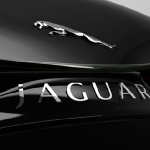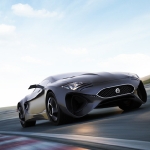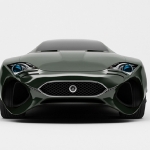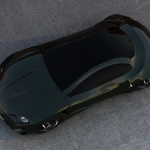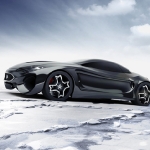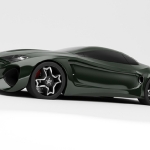Energetic and eclectic, the new twenty-first century electric-powered roadster concept study from Jaguar takes its inspiration from the icon of their marque which started their modern-day leadership of stylish supercars.
A new concept study from Jaguar, dubbed the XKX, harks back to the everlasting lines of the E-type in a contemporary interpretation of the legendary sports car. This edgy roadster incorporates modern aerodynamics and revolutionary energy feedback to be as radical today as the E-type was fifty years ago.
The revival of the E-type is a thought well worth pursuing on its own merit. When combined with mimicking its eternal spirit through a sustainable power plant, the idea is a truly powerful one. Looking to the past, the designers of this concept car took the elegant lines and crafted them into a new aerodynamic construction. Integrated into this smooth silhouette are the small dimensions of the engine. This electric vehicle is further able to incorporate the flexibility of the battery’s placement and so look for the optimal profile for aerodynamic efficiency. This was found with the assistance of widened side deflectors on the front intakes which allows air to flow behind the front wheels.
Oxygenating the contours, the atmosphere then glides along the doors, shortcutting through the rear wheel arches, and exiting at the enormous rear vents. Whilst this svelte airstream is obviously visually arousing, there is an engineered reduction in the total flow path and subsequent drag as a result. After all, engineers dream of less resistance. The fluidity of the side figure is also a reflection of the symbolic Jaguar. The leaping cat is embodied in the aspect, with the headlights alluding to a potent feline pounce.
Smart engineering is seen in the side mirrors that disappear when the car stops, and unfold again when ignition is next on, as well as the regenerative power system, and in the body coating. A layer of microscopic piezoelectric cells covers the car. As apparent wind, the air that flows over a car’s body during forward momentum, rushes over this layer, the subsequent pressure created produces electricity which is fed back to the battery. This innovative car is even able to convert the main drain of energy, the sixty percent lost as cars counter air friction during driving, into something of worth.

